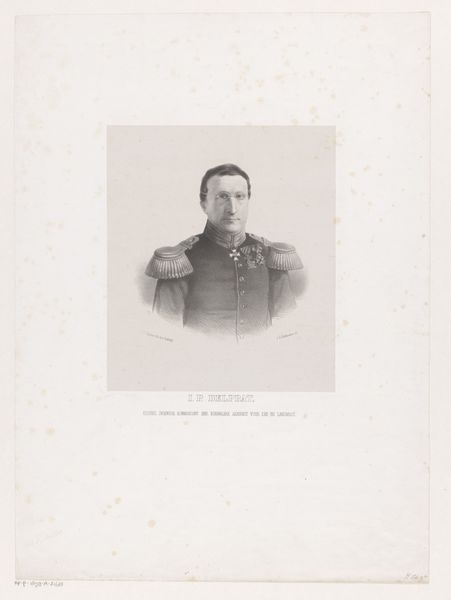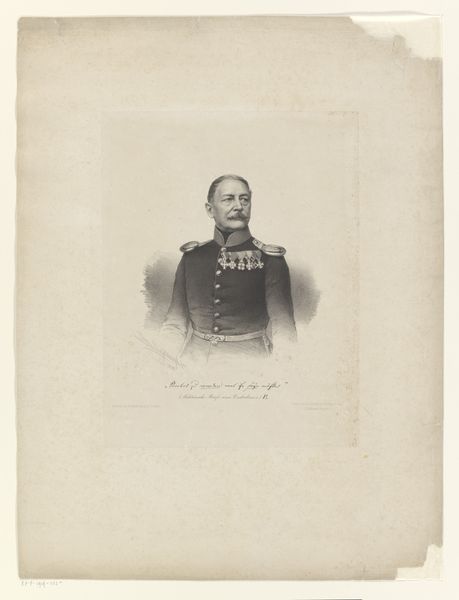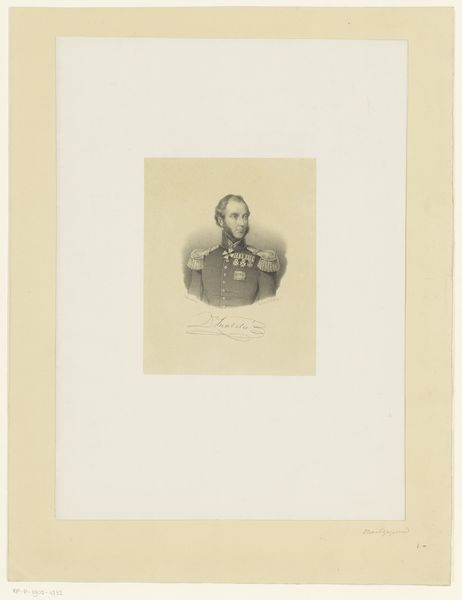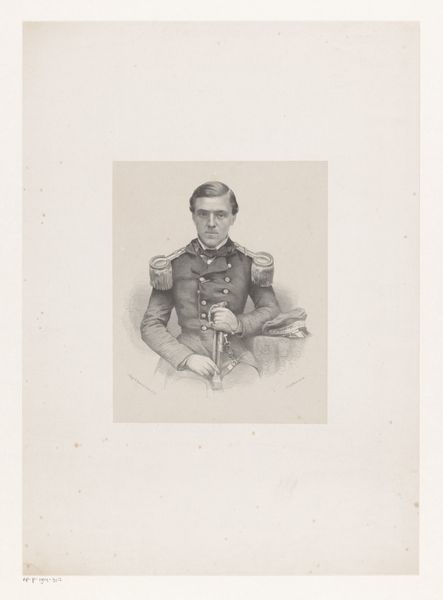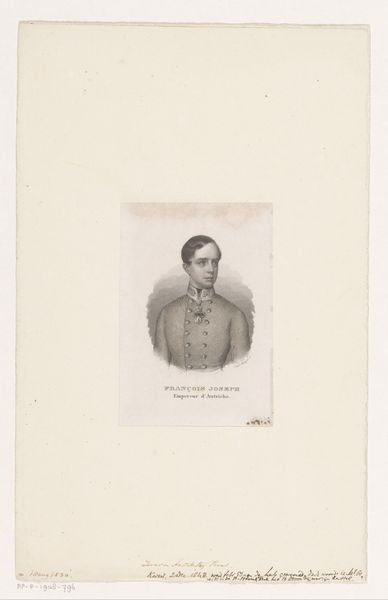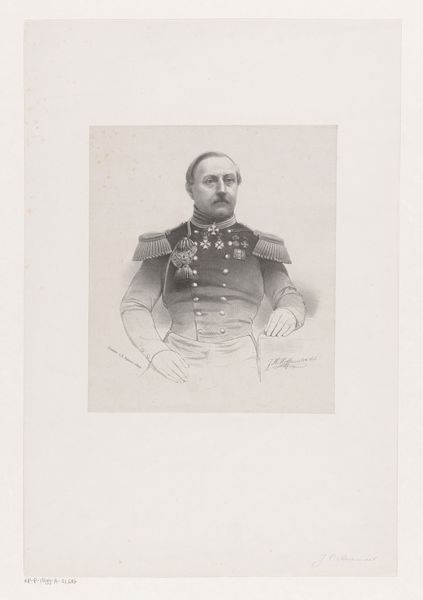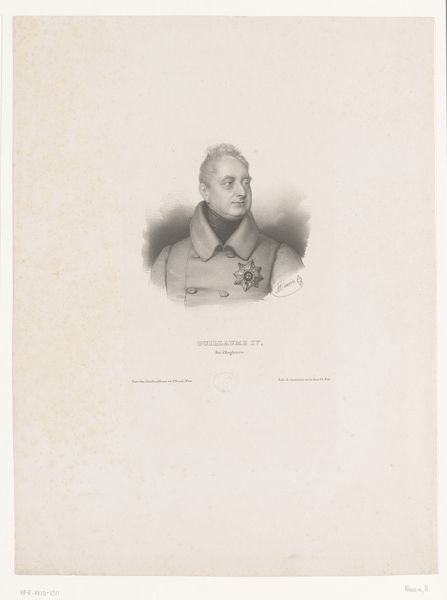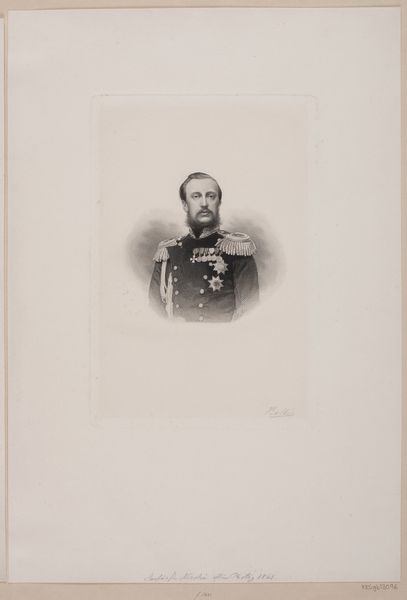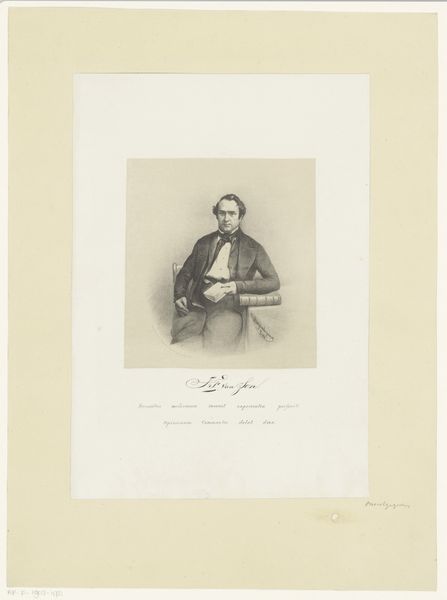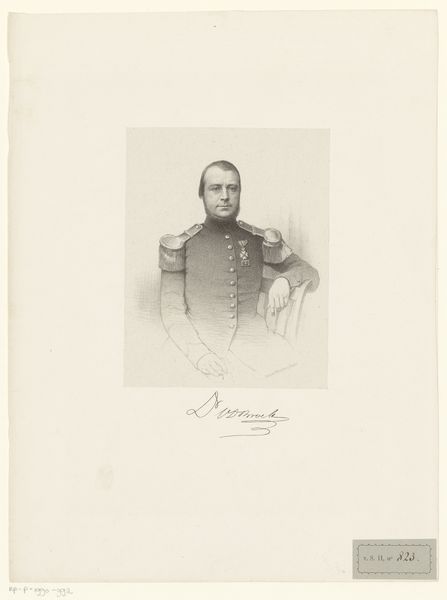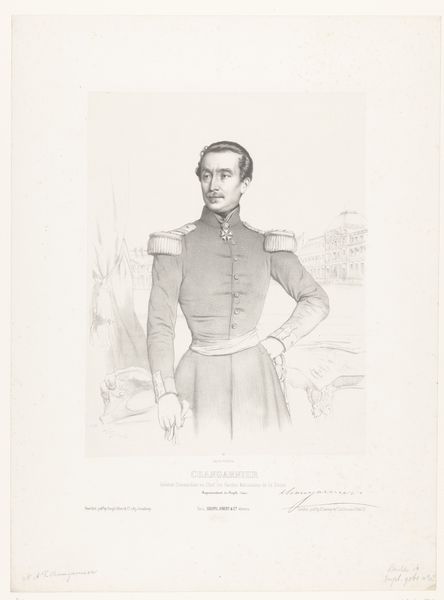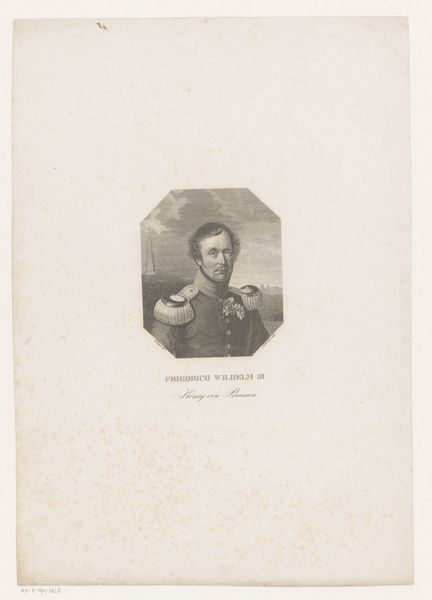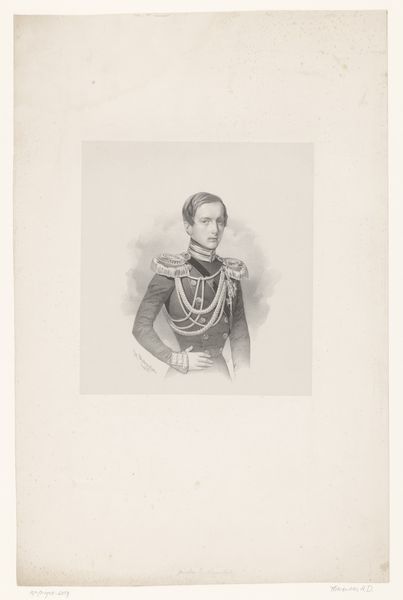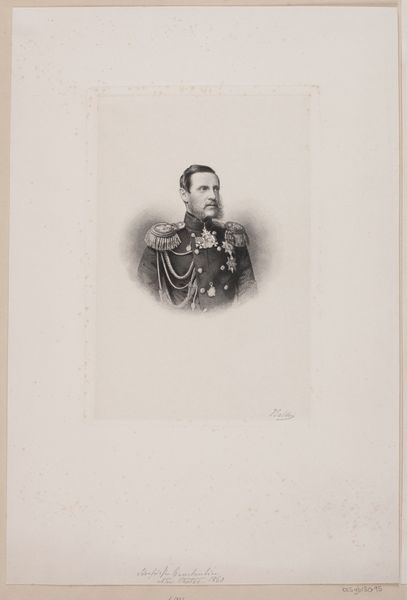
drawing, print, graphite
#
portrait
#
drawing
# print
#
old engraving style
#
graphite
#
academic-art
#
realism
Dimensions: height 465 mm, width 333 mm
Copyright: Rijks Museum: Open Domain
This is a portrait of Johannes Fredericus Kerst, made by Pieter Wilhelmus van de Weijer in the 19th century. It's a lithograph, meaning that the image was drawn onto a flat stone and then printed. Lithography was a relatively new technology at the time, offering a way to reproduce images quickly and relatively cheaply. The process relies on the skillful application of grease to the stone, allowing the artist to create subtle tonal variations, seen here in the subject’s face and uniform. Note the texture and the weight of the lines, all created by the artist’s hand and the properties of the stone. The choice of lithography speaks to a democratization of image-making. Rather than a unique, hand-painted portrait, this is a reproducible image, making it more accessible to a wider audience. It also speaks to the rise of a middle class, who could now afford to have themselves or their loved ones memorialized in print. Considering the materials, making, and context reveals a shift in artistic production, reflecting broader social and economic changes.
Comments
No comments
Be the first to comment and join the conversation on the ultimate creative platform.
